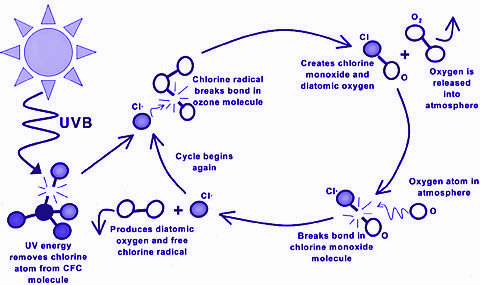“By 1970, CFCs had made their way to the process and product of all manner of manufactured things. In the home, CFCs propelled the plunge in temperature of every fridge and freezer, or every air-conditioning unit and central system. The dawn of World War II had inaugurated a new epoch of consumer products: aerosol sprays. The spray apparatus of the DDT-Freon bug bombs, which the US military had developed specifically as an aid to the war machine in the Pacific theatre, served afterward as the model for a motley crew of sprayable domestic comforts: hair sprays, car polish, shoe polish, disinfectant sprays, toilet cleaners, airhorns, Silly String, fake snow – even an “instant glass froster”, “the perfect way” the label on the can tells me, “to serve party drinks!” The reluctance of Freon to react with other chemicals made CFC-12 an easy propellant for many – though not all – spray cans, the appearance of which heralded a kind of “push-button age” as the American public grew obsessed with convenience at the press of a spray nozzle.”
1840 John Gorrie clear antecedent to the AC unit, Tom Midgley JR 1930 – CF12 (Freon), Leaded Gasoline and DDT. Non-toxic, non-flammable, stable and inexpensive to manufacture, 1931 the complexities of the ozone layer are discovered (Sydney Chapman). A single pound of CFCs destroys 70K pounds of ozone. One molecule of CFC12 is 10,500 times more potent than one molecule than CO2 (warming). The Dobson Spectrometer (UVA vs UVB). HFC 1988 – 1,300 times the global warming potential of CO2. 2016 Kigali. HFOs Hydrofluoorololefins (carbon, hydrogen and fluorine atoms).
